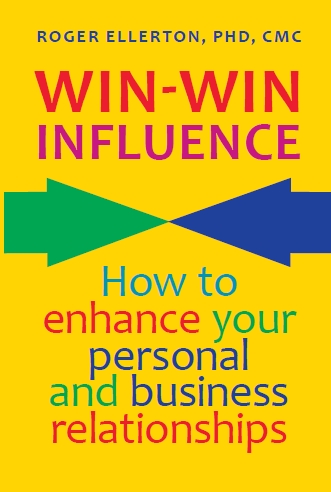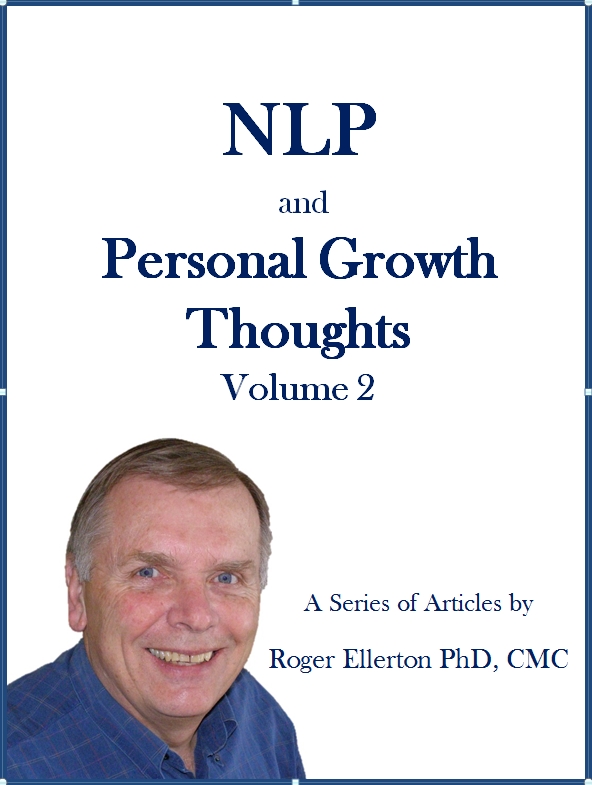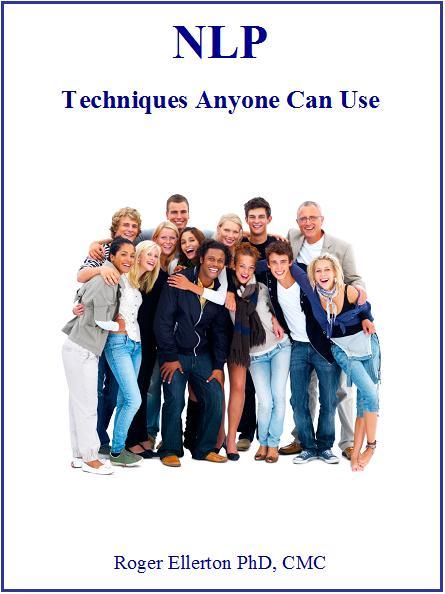NLP Swish Pattern
By Roger Ellerton Phd, ISP, CMC, Renewal Technologies Inc.
This article may not be republished without written permission from Roger Ellerton/Renewal Technologies Inc. If you republish this article without permission, you will be in violation of copyright law and sent an invoice. You may share this and other pages with your friends by linking directly to this page from your website or blog.
The Swish Pattern is a useful NLP technique to help people address an unwanted behaviour response to a specific stimulus by changing key submodalities. Compulsive or obsessive behaviours, such as an uncontrollable desire to bite your nails, smoke, eat certain foods, or habits are often linked with a trigger or cue image.
For example, I used this technique with a woman who was a model. For many of her modeling assignments, she would drive from Ottawa to Toronto (minimum 5 hours) and on the way, she would snack on potato chips. First, I verified with her that this was an unwanted behaviour and also checked that there was no secondary gain. I asked her what she would like to do instead and she said to eat apples. My task was to unlink the initial mental image (thinking of eating potato chips) from the act of eating potato chips and link it to eating an apple.
- Have your client identify a specific behaviour that he wishes to change and the cue image that starts the process.
- Have your client identify a new self image with the desired behaviour(s) that satisfies the positive intent of the undesired behaviour. Have him generate a picture of this new self-image.
Our task now is to link the cue image in step 1 with the new self image in step 2.
- Check the ecology of the new self image and associated behaviour(s).
Have your client assess the impact of this new behaviour on himself (what will he have to give up or take on), his family, friends, co-workers, community, etc.
- Identify at least two submodalities that reduce the desire for the behaviour in step 1 and increase the desire for the new self image in step 2.
Ask your client to get a picture of the behaviour in step 1 and then have him adjust different submodalities and notice which ones reduce the desire for this behaviour. For example, he may find that reducing the brightness and defocusing the picture reduces the desire for the behaviour in step 1. The submodalities should be those that vary over a continuous range e.g. brightness, size, focus, etc.
Now ask your client to get a picture of the new self-image and behaviour (step 2) and notice if the desire for this behaviour is increased as the submodalities identified in the previous paragraph are changed in the opposite direction. That is, increasing the brightness and improving the focus makes the new self image in step 2 more compelling.
It is possible to do the Swish Pattern with an auditory or kinesthetic cue. In this case you would use auditory or kinesthetic submodalities. However, the process is easiest if you use a visual cue.
Remember to break state when switching between behaviours.
For the rest of the procedure, I will assume that the critical submodalities are brightness and focus.
- Have your client take the cue picture and make it big, bright and clearly focused. In a corner of this picture (let's say the lower right hand corner), have your client put a small dark and defocused picture of the new self image and related behaviour.
Your client should be associated in the cue picture (i.e. can not see himself in the picture, he is looking through his own eyes), while the picture of the new self image must be dissociated to be motivating and attractive. An associated picture gives your client the feeling that he has already made the change, and therefore it will not be motivating for him.
- Have your client make the cue picture smaller, darker and defocused as the picture of the new self image gets bigger, brighter and focused. Continue until the cue picture is a small dark, defocused picture in the lower right hand corner of a big bright, focused picture of the new self image.
- Have your client take a moment to enjoy this new self-image and the resources that he now has available to him.
- Break state. Have your client repeat steps 5, 6 and 7, but this time have him do step 6 faster.
It is important to break state after step 7. We want to create a compelling direction from the cue picture to the new self image. If we did not break state, then we would set up a cycle where the new self-image leads back to the cue picture.
- Have your client repeat steps 5, 6 and 7 until he has done it at least 7 times and step six takes a fraction of a second to complete.
This is why it is called Swish Pattern - in less time than it takes to quickly say swish, the client has completed step 6. Speed is essential in step 6.
- Test and future pace. Have your client think of the cue. Does he now think of the new self image and related behaviours? Great!
And NLP is Much more than that!
Author: Roger Ellerton is a certified NLP trainer, certified management consultant and the founder and managing partner of Renewal Technologies. The above article is based on his book Live Your Dreams Let Reality Catch Up: NLP and Common Sense for Coaches, Managers and You.
Copyright © 2005, Renewal Technologies Inc. All rights reserved.








